Abstract
This paper explores the factors involved in assessing the value of a tumour-marker test in differential diagnosis and patient monitoring. The difficulties have been grossly underestimated, and in the past it has been tacitly assumed that an association between the tumour-marker level and the presence of malignancy is sufficient to prove the usefulness of the test. Part 1 investigates in depth the principles of design of a study to evaluate a tumour-marker test, bearing in mind the ultimate aim of improving the patient's prognosis. The preliminary research carried out on the tumour marker, the laboratory assay technique itself and the "normal" range of levels or the use of a proposed critical level, are all reviewed. The clinical side presents many problems, including the precise definition of the medical situation in which the addition of a new test may assist, and the estimation of the overall size of this problem. Some examples from studies are given. The general principle of evaluating a tumour marker by considering the clinical situation first without, and then with, a tumour-marker result, is stressed. Part 2 gives some practical advice on the setting-up, administration and analysis of such studies.
Full text
PDF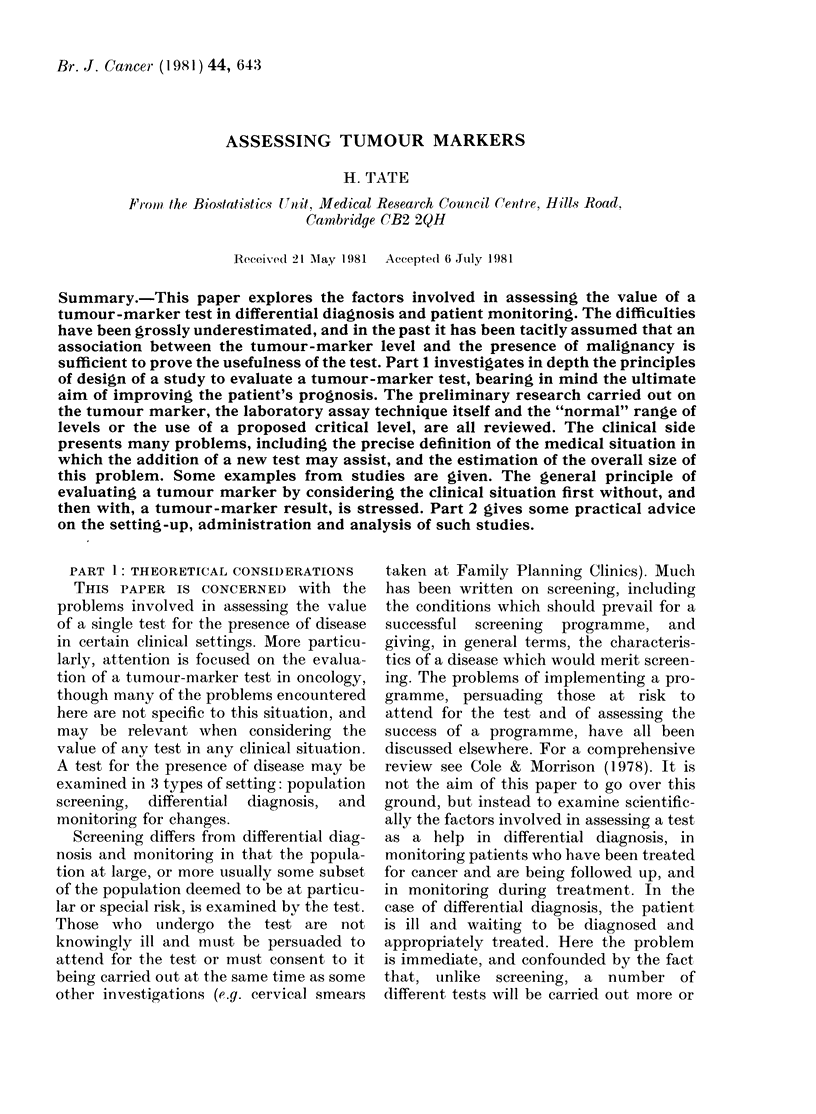
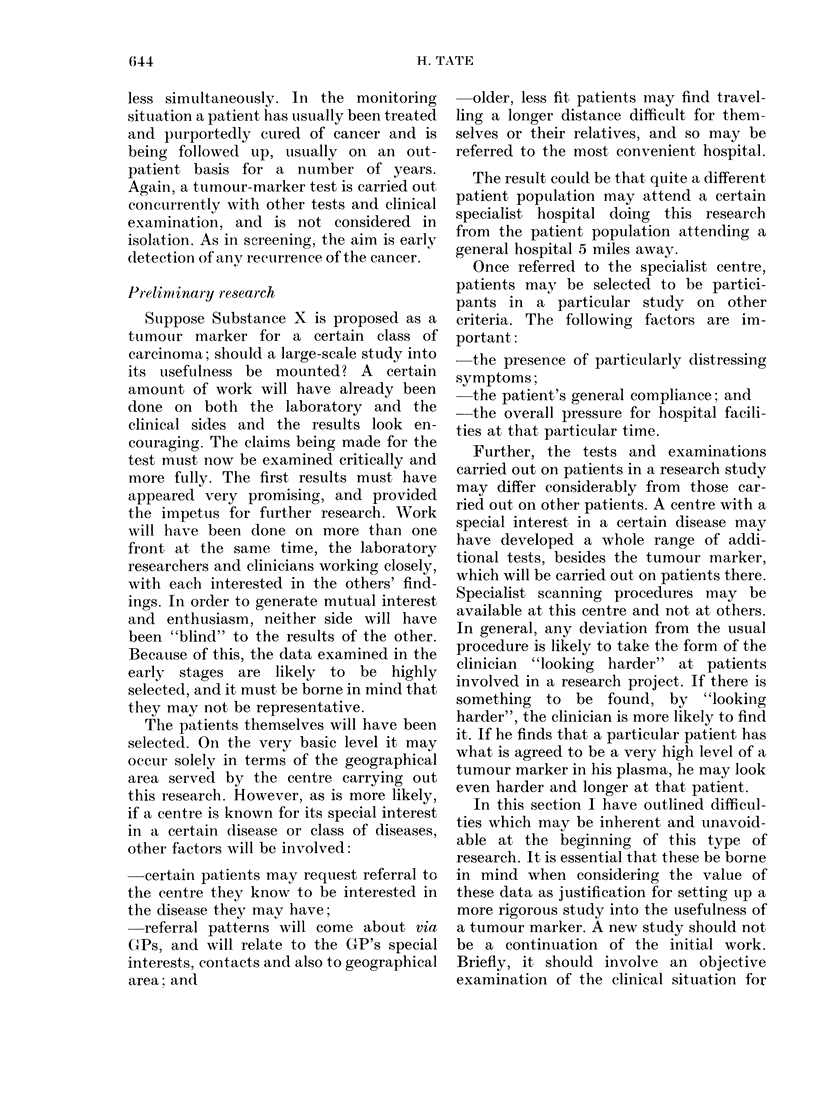
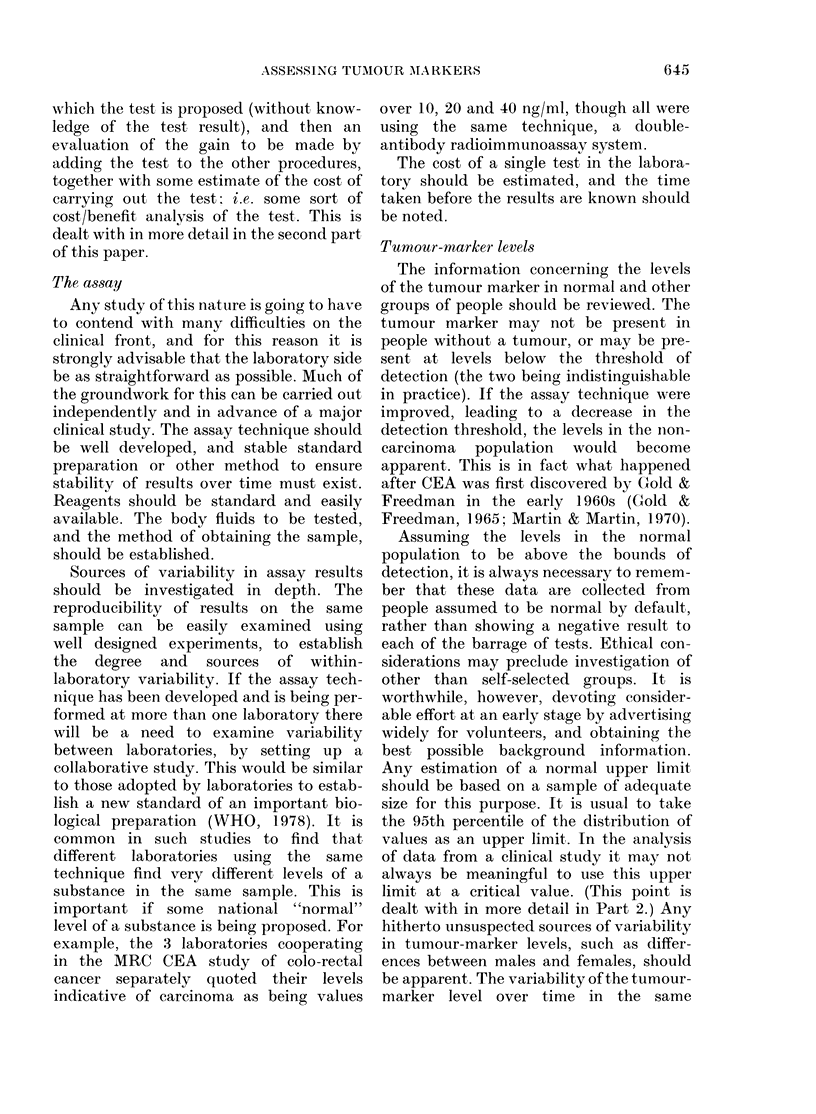
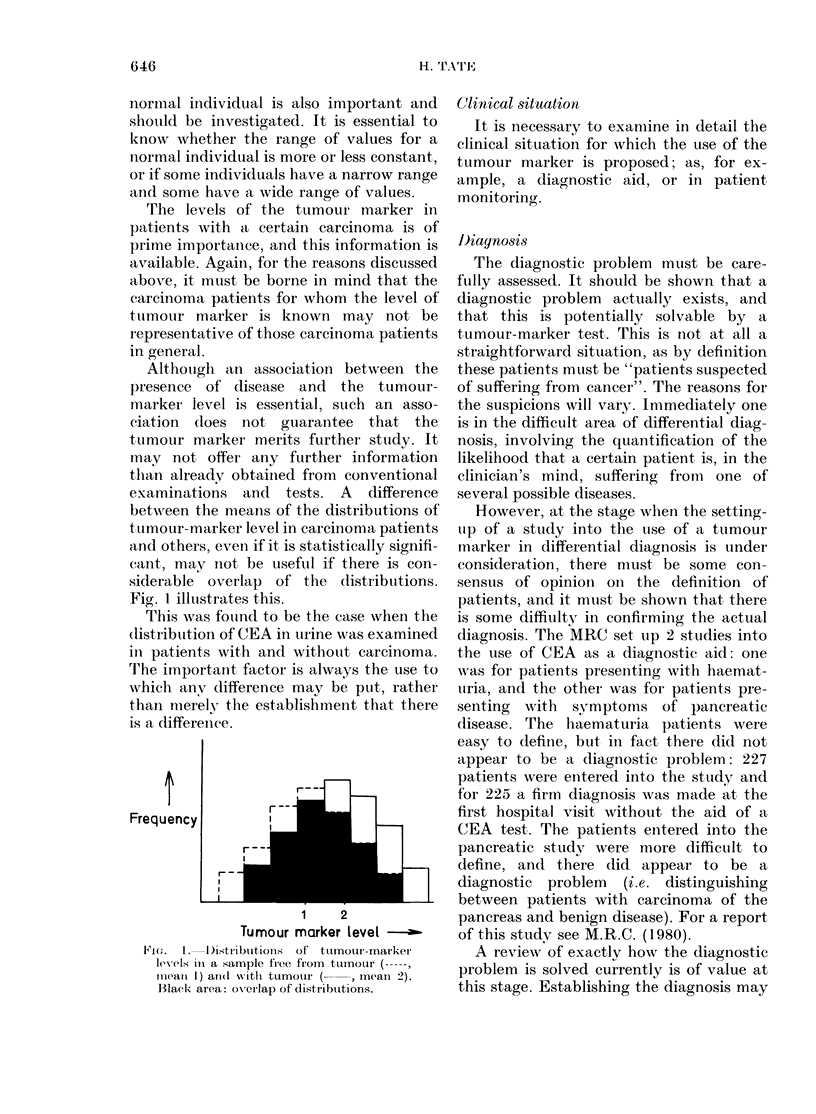
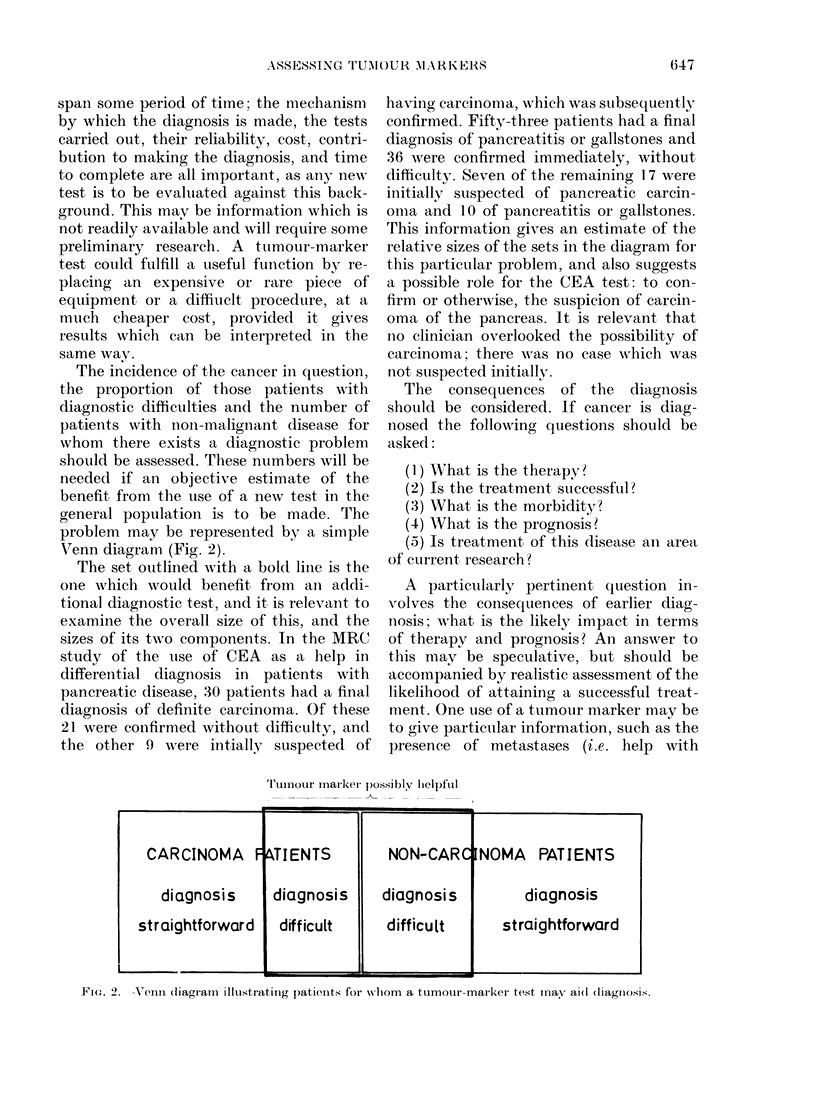
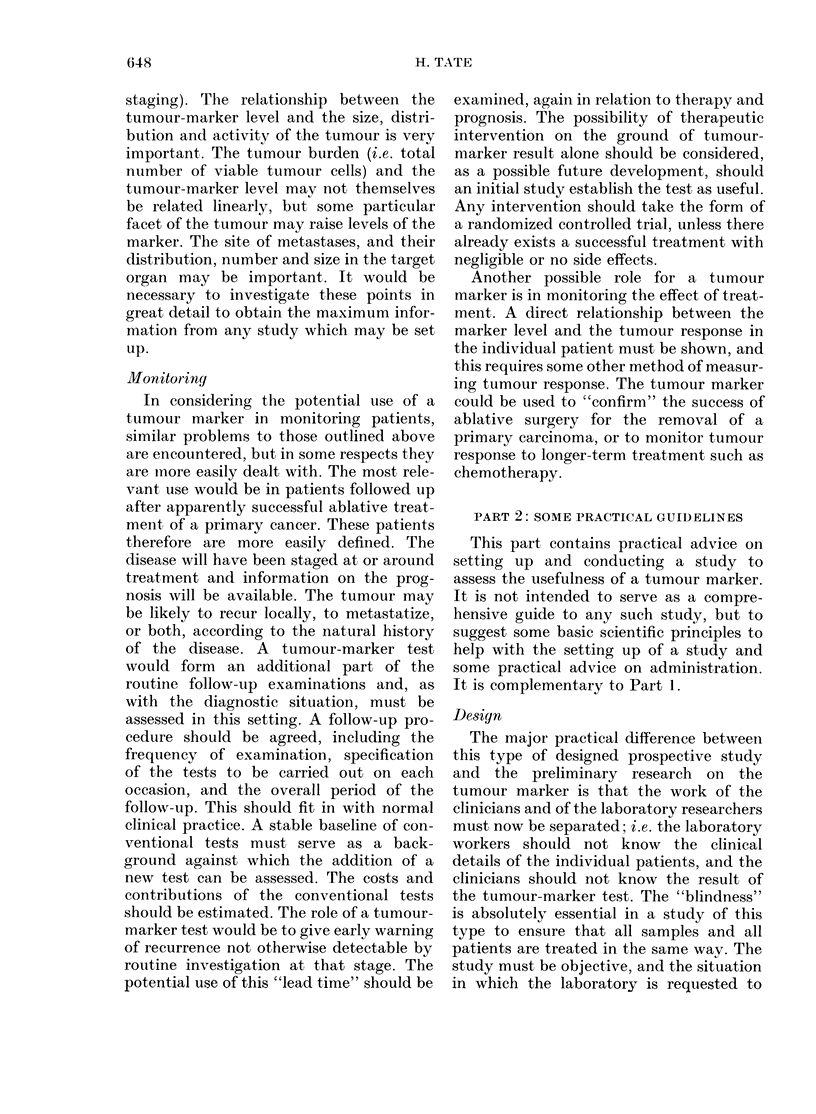
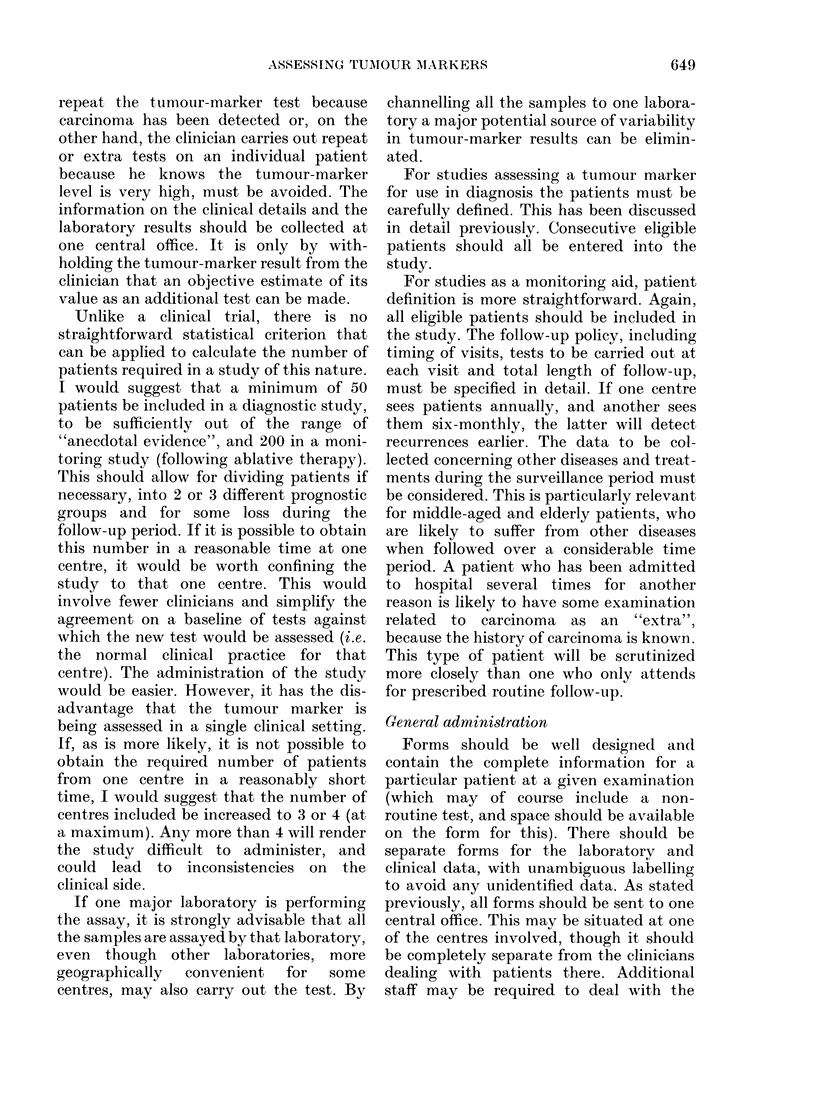
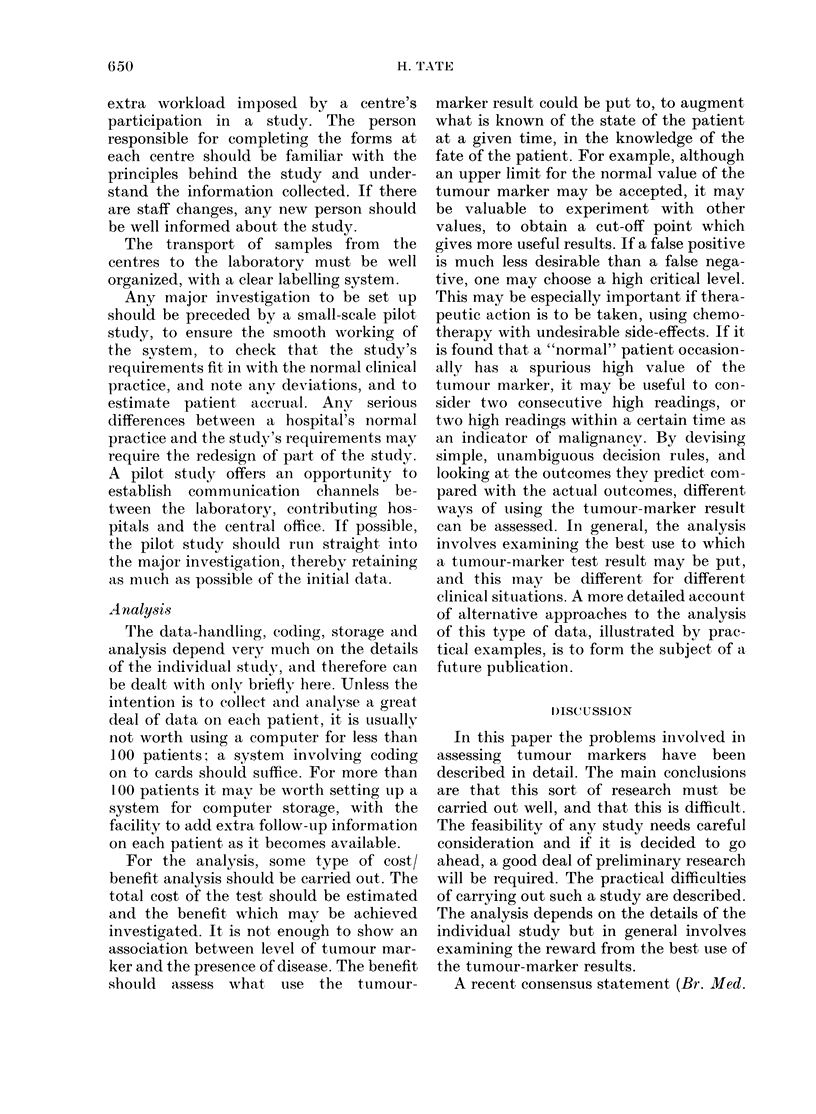
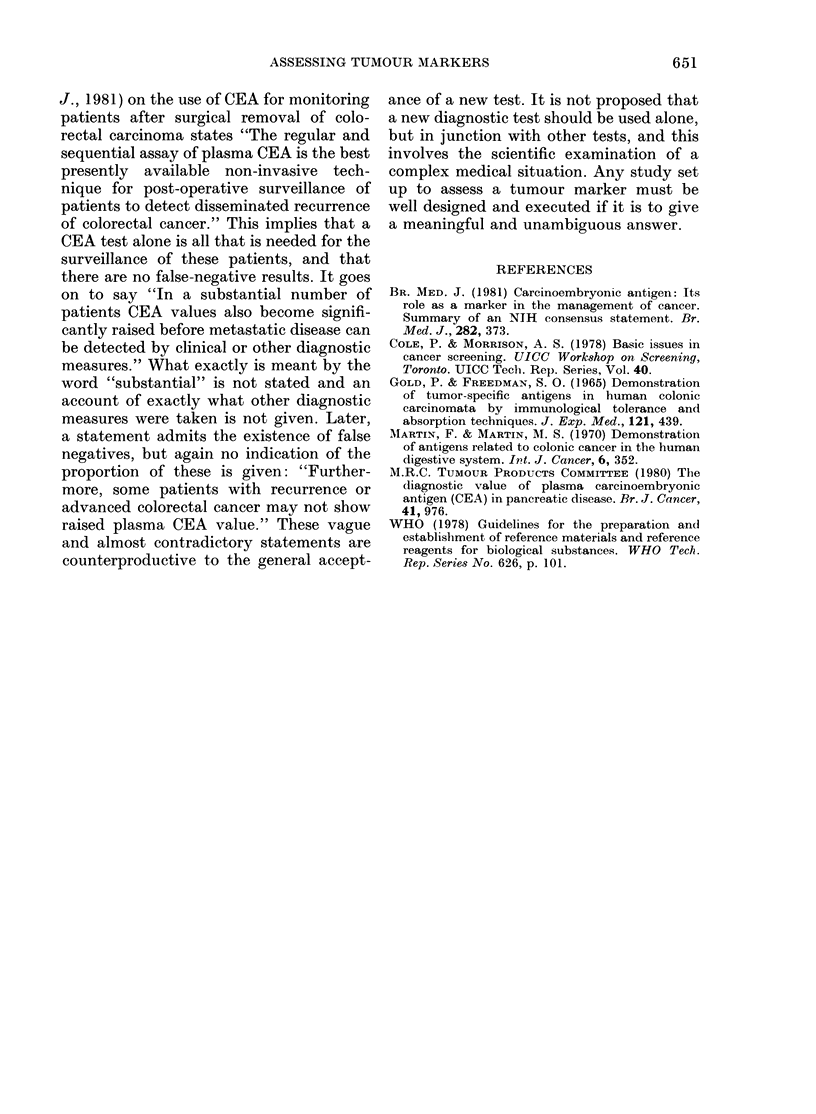
Selected References
These references are in PubMed. This may not be the complete list of references from this article.
- GOLD P., FREEDMAN S. O. DEMONSTRATION OF TUMOR-SPECIFIC ANTIGENS IN HUMAN COLONIC CARCINOMATA BY IMMUNOLOGICAL TOLERANCE AND ABSORPTION TECHNIQUES. J Exp Med. 1965 Mar 1;121:439–462. doi: 10.1084/jem.121.3.439. [DOI] [PMC free article] [PubMed] [Google Scholar]
- Martin F., Martin M. S. Demonstration of antigens related to colonic cancer in the human digestive system. Int J Cancer. 1970 Nov 15;6(3):352–360. doi: 10.1002/ijc.2910060305. [DOI] [PubMed] [Google Scholar]


